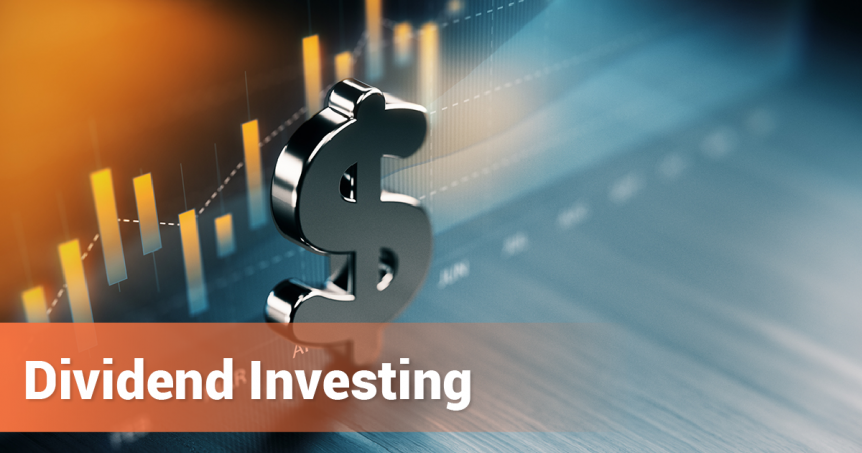Most investors seek to build long-term value rather than generate short-term income. After all, the goal for most working-age adults is to maximize the value of their nest egg in retirement. They are willing to accept more risk in their portfolio by investing in growth stocks in exchange for historically higher returns over their investment time horizon.
But in some cases, investors are more concerned about a consistent cash flow than growing their portfolio’s value. A retiree without an employment income, for example, may want to generate cash flow to cover their day-to-day living expenses. Their goal is usually to minimize risk and ensure they will always have enough cash flow.
These investors often use dividend investment strategies to generate a stream of income from corporate dividend payments and minimize risk by investing in ‘safe’ stocks.
Let’s take a look at some common dividend investment strategies, as well as some alternatives to consider to generate cash flow.
Dividend Investing 101
There are many different ways to generate income from dividends. Investors can screen for individual stocks that pay dividends and build their own portfolio or purchase exchange-traded funds (ETFs) or mutual funds that focus on dividend-paying stocks in exchange for a modest management fee — known as an expense ratio.
The right decision depends on many different factors. For example, building and managing your own portfolio takes a lot of time and expertise, as well as the right temperament. Mutual funds and ETFs are a set-and-forget option, but it’s important to ensure that excessive management fees aren’t eating into your returns.
Investing in Dividend Stocks
Many companies pay a portion of their corporate earnings to shareholders in the form of a dividend. In addition to providing retirement investors with a consistent cash flow, dividend payments are seen as a sign of a company’s financial strength and management’s conviction that it will grow earnings.
There are several ways that investors typically evaluate dividend stocks and decide on the best options for their portfolio:
- A company’s dividend history tells you how long it has been paying a dividend to shareholders. Obviously, a longer dividend history translates to a more reliable payment, although that’s not always the case.
- A stock’s dividend yield is calculated by dividing the dividend payout by the share price. It represents the ‘interest rate’ that you receive for owning the stock. All else equal, you want to maximize the dividend yield to generate the most cash flow.
- The payout ratio is the proportion of earnings paid out as a dividend. If the payout ratio is too high, the dividend yield may not be sustainable over time — particularly if a company has a bad year and experiences a drop in earnings.
- A stock’s price-earnings (P/E) ratio is a commonly used valuation metric. It essentially represents how much you’re paying for each dollar of earnings. Assuming everything else is equal, most investors prefer stocks with low P/E ratios.
Many investors look towards stock indexes that track attractive dividend stocks as a starting point for their research. For example, S&P’s popular Dividend Aristocrat Index includes about 60 S&P 500 companies with more than 25 years of consecutive dividend increases that also meet certain size and liquidity requirements.
Investing in Dividend Funds
There are around 200 different dividend-focused ETFs and many more mutual funds. Each of these funds uses different criteria to select dividend stocks that may appeal to a target investment audience. For example, some are focused on maximizing income and others are focused on striking a balance with risk.
Some of the most popular dividend funds by assets under management (as of July 2019) include:
- Vanguard Dividend Appreciation ETF (VIG)
- Vanguard High Dividend Yield ETF (VYM)
- SPDR S&P Dividend ETF (SDY)
- iShares Select Dividend ETF (DVY)
- Schwab U.S. Dividend Equity ETF (SCHD)
In addition to looking at dividend yields, investors should evaluate a fund’s volatility and expense ratio before making a decision. The level of volatility should match up with their overall risk tolerance, while the expense ratio should be minimal to avoid eating into returns.

Dividend Investing for Retirement
Most retirement investors are seeking a combination of immediate cash flow and long-term safety. After all, they want to ensure that they can meet expenses now and in the future regardless of market conditions, although they may not want to leave money on the table, either.
There are a few steps to get started with dividend investing in retirement:
- Determine if you want to invest in individual stocks or funds, while keeping in mind that individual stocks require more time and effort than funds.
- Determine how much yield is required to meet your cash flow requirements, while keeping in mind income from other sources, such as Social Security or pensions.
- Determine your risk tolerance — or how much risk you’re willing to assume to meet those cash flow retirements.
- Determine the right investment strategy for your yield requirements and risk tolerance.
If dividend yields aren’t enough to meet your cash flow requirements on their own, you may want to consider alternative strategies, such as selling covered calls. You can sell a covered call that’s backed by a stock that you already own and keep the premium as income. If the option expires worthless, as most options do, you keep the premium and the stock.
The Snider Investment Method shows you exactly how to build an optimal portfolio to meet your risk tolerance, as well as how to identify monthly call options. By using our simple and straightforward strategy, you can eliminate a lot of the guesswork and emotion that causes problems for many traders, as well as minimize your monthly time commitment.
Sign up for our free e-course to learn more today!
The Bottom Line
Dividend investments are a great way to generate cash flow during retirement without relying on fixed income investments. In addition to these strategies, investors may want to consider selling covered calls to further boost cash flow during retirement while sticking to an equity-based portfolio.
Learn more about the Snider Investment Method or contact us to inquire about our asset management services.







